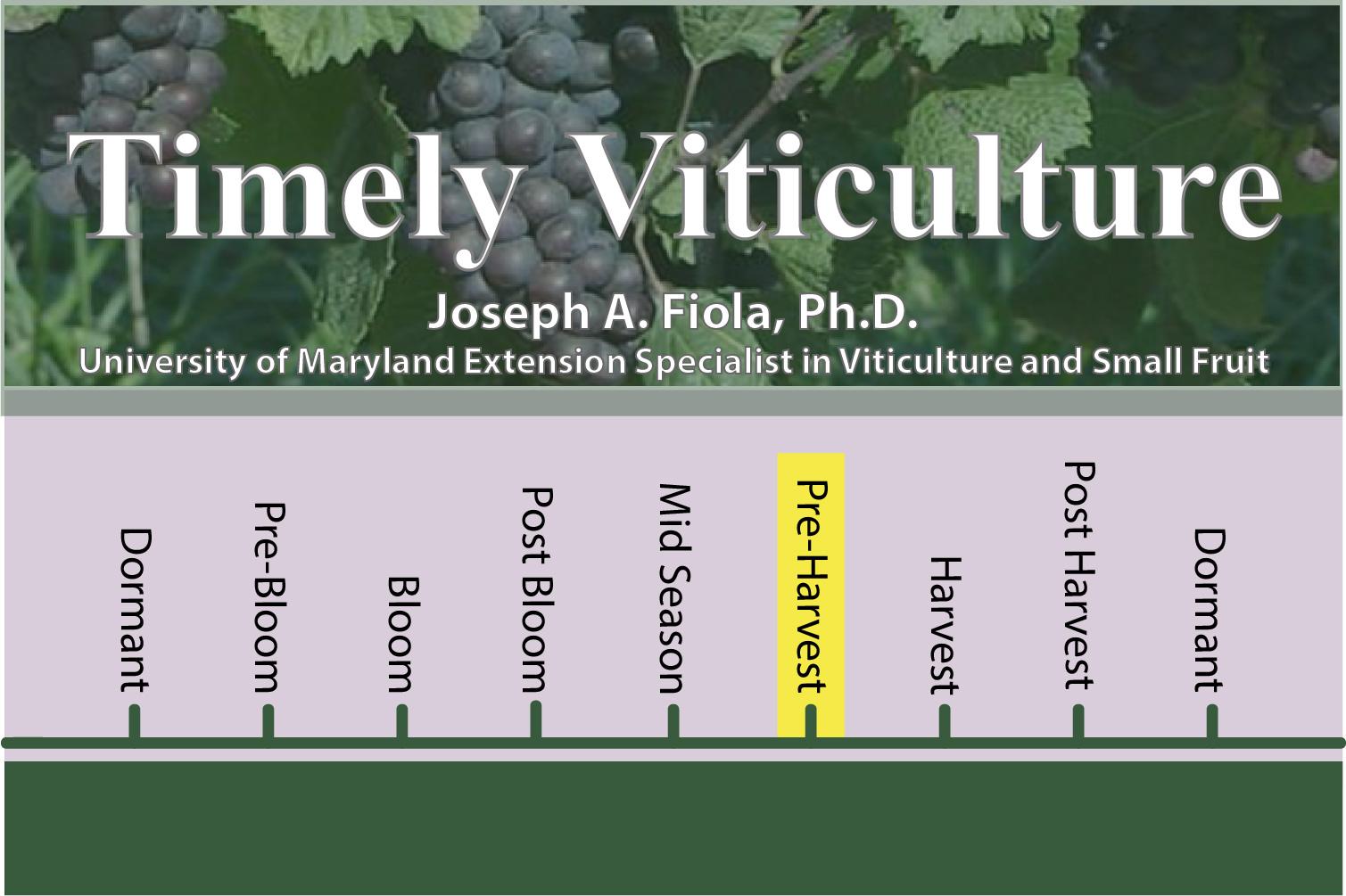Evaluating Grape Samples For Ripeness
It is critical to properly monitor and assess the fruit characteristics and maturity to make the appropriate management, harvesting, and winemaking decisions to produce the best quality grapes and wine possible from each specific vintage. A previous Timely Viticulture on Crop Development Sampling described how to take a proper sample that best represents the actual ripeness stage of the cultivar in that vineyard. The next step is to set the priorities that will optimize fruit quality and allow you the opportunity to make the best possible wine and then evaluate your sample and time your harvest based on that criteria. For additional details please see Timely Viticulture-Determining Harvest Priorities.
Note: The critical principles here are that high-quality wine is the confluence of fruit-derived flavor and aroma components and additionally for red grapes the reduction of immature tannins and aromas.
- These do not necessarily correspond to “desired” sugar and acid ranges.
- The highest priority needs to be the quality and quantity of varietal aroma/flavor in the fruit.
- Simply stated, to obtain a desired characteristic aroma or flavor in the wine, it must be present in the grapes at the time of harvest!
- By regular, continuous sampling you will learn through experience the succession of aromas, flavors, and textures that each cultivar goes through.
- Depending on the degree of ripeness, red grape characteristics can range from green and herbaceous to fruity to “jammy.”
- Therefore the individual sampling must be diligent by monitoring for that aroma and/or flavor in the sample.
- The next highest priority, especially for red wines, is the texture of the grape tannins in the skin and the seed.
- The quality and quantity of the tannins determine the structure, body, astringency, bitterness, dryness, and color intensity of the wine.
- Mature tannins are critical to the production of quality red wines.
- The degree of ripeness and polymerization of the tannins will determine the astringency and mouth feel of your wine.
- This can range from the undesirable, hard, and coarse tannins of immature grapes, to the desirable, “supple, and silky” profile of mature grapes.
Procedures
- Select a few random grapes and place them in your mouth. DO NOT look at the cluster when you are choosing the grapes because you will tend to pick more ripened berries.
- Without macerating the skins, gently press the juice out of the berries and assess the juice for sweetness (front of tongue) and acid (back sides of your tongue). With experience and comparison against numbers from lab samples, you will be able to reasonably guesstimate the Brix and TA level of the grapes.
- The next step is to gently separate the seeds from the skins and “spit” into your hand. The color of the seeds gives you a clue to the level of ripeness. Green seeds are immature, green to tan and tan to brown seeds are maturing, and brown seeds are mature. Ripe seed tannins are desirable as they are less easily extracted and more supple on the palette.
- Finally, macerate the remaining skins and press them in your cheeks to assess the ripeness of the skin tannins. You will be able to “feel” the astringency (pucker) of the skins. As the grapes ripen, the intensity of the astringency decreases.
- A great way to practice is to first sample an early ripening grape cultivar such as Merlot and then immediately go to a later ripening cultivar such as Cabernet Franc, and then to Cabernet Sauvignon, and you will sense the difference in the acidity, astringency, and ripeness.
Considerations
- Of course, other factors must still be considered, such as the total acidity and pH
- Preferably you would like to harvest white grapes in the 3.2-3.4 pH range and reds in the 3.4-3.6 pH range; as long as the varietal character is appropriate as described above. The winemaker can do a good job adjusting sugars and acidity, but it is almost impossible to increase varietal character in the wine.
- Preferably you would like to harvest white grapes in the 3.2-3.4 pH range and reds in the 3.4-3.6 pH range; as long as the varietal character is appropriate as described above. The winemaker can do a good job adjusting sugars and acidity, but it is almost impossible to increase varietal character in the wine.
- Brix or sugar content is good to follow on a “relative” scale but the levels can greatly vary from vintage
to vintage.- In some years the grapes will be fully ripened and have a great varietal character at 21 Brix and another year they may still not have a ripe varietal character at 23 Brix.
- American and Hybrid cultivars tend to accumulate less sugar than vinifera cultivars.
- Disease/Rot - Monitor to see if the grapes are deteriorating due to fruit rots or berry softening.
- Look at the short and long-range forecast.
- If the weather looks good and the grapes have the ability to ripen further, then there may be a benefit to letting them hang a bit longer.
- However, if a tropical storm is on the way, think twice.
- When grapes are close to optimal ripeness, it is more desirable to harvest before a significant rainfall than to wait until after the rain and allow them to build up the sugar again afterward.
Timely Viticulture is designed to give those in the Maryland grape industry a timely reminder on procedures or topics they should be considering in the vineyard.
